There’s somethin magical about the combination of gray and blue in living room design that just works. These two colors create a perfect balance of warmth and coolness, sophistication and comfort. Whether your leaning towards a modern aesthetic or prefer a more traditional vibe, gray and blue can transform your living space into a stylish sanctuary that feels both fresh and timeless.
In this comprehensive guide, we’ll explore 22 stunning ways to incorporate gray and blue into your living room decor. From color psychology to furniture selection, accessorizing tips to seasonal adjustments—you’ll discover everything you need to create a space that’s not just on-trend, but genuinely reflects your personal style and enhances your everyday living experience.
Understanding Color Psychology in Living Spaces
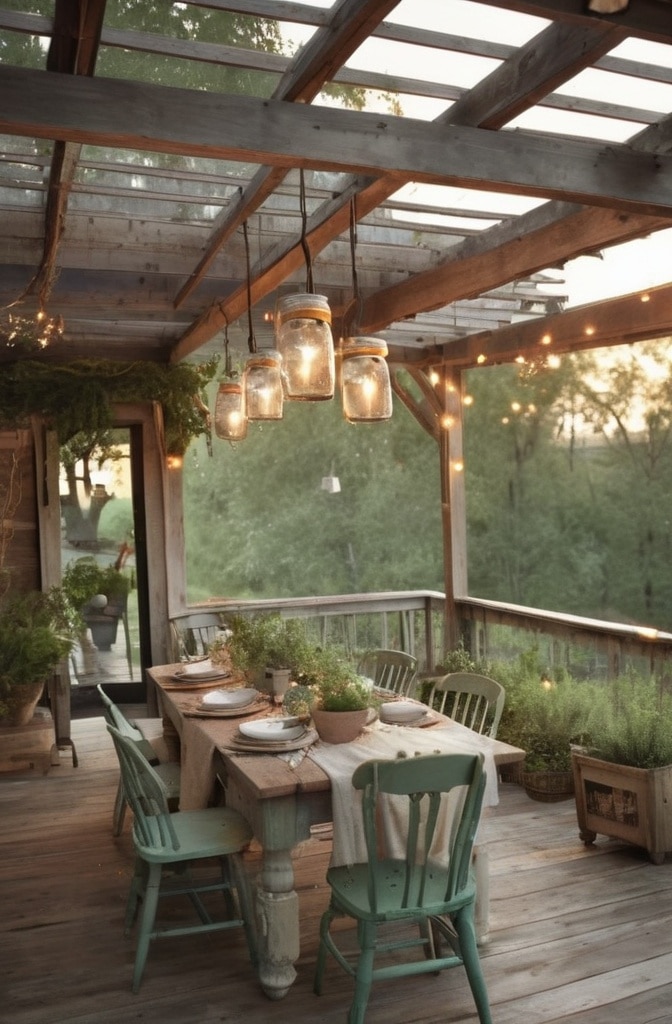
Before diving into specific design ideas, it’s worth understanding why gray and blue work so well together in living spaces. According to color psychology experts, these hues affect our mood and perception in distinct ways.
Gray serves as a neutral foundation that exudes sophistication and stability. Interior designer Rebecca Thompson notes, “Gray acts as the perfect canvas—it’s neither too warm nor too cool on its own, which makes it incredibly versatile as a base color.” Studies show that neutral tones like gray can create a sense of spaciousness and calm, allowing other design elements to shine.
Blue, on the other hand, is consistently rated as one of the world’s most beloved colors. Research published in the Journal of Environmental Psychology found that blue environments tend to lower blood pressure and heart rate, promoting feelings of tranquility and peace. From deep navy to soft sky blue, this color brings a sense of reliability and depth to any space.
When combined thoughtfully, these colors create what designers call “balanced tension”—enough contrast to be interesting, but enough harmony to be cohesive.
Choosing Your Perfect Gray Base
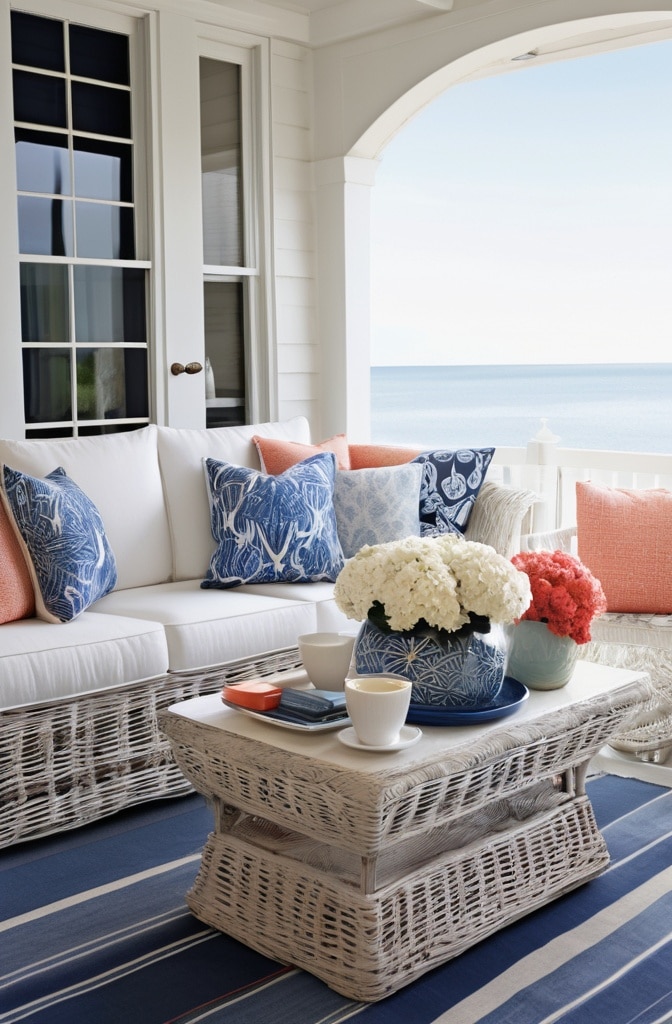
The right gray foundation can make or break your blue and gray living room design. Despite what many think, gray isn’t just one color—it’s a whole spectrum with distinct undertones that dramatically affect the final look.
Warm vs. Cool Grays
- Warm grays (or “greiges”) have yellow, brown, or red undertones and pair beautifully with navy or indigo blues
- Cool grays contain hints of blue or purple and complement sky blue or teal accents perfectly
- True grays are balanced and work with virtually any blue shade
A common mistake is choosing a gray without considering your room’s lighting conditions. Natural northern light tends to emphasize cool undertones, while southern exposure brings out warmth. Always test paint samples at different times of day before committing to a shade.
For smaller spaces, lighter grays like Benjamin Moore’s “Gray Owl” or Sherwin Williams’ “Repose Gray” can help create an airy feel. In larger rooms with plenty of natural light, don’t be afraid to go darker with charcoal tones like Farrow & Ball’s “Downpipe” for dramatic effect.
Exploring Blue Variations That Complement Gray

Just as with gray, the blue you choose sets the tone for your entire living room. Here’s how different blue variations can transform your space:
Navy Blue + Gray: Timeless Elegance
Navy blue brings instant sophistication when paired with gray. This combination works particularly well in traditional or transitional spaces. According to a 2023 survey by Houzz, navy blue remains one of the top five accent colors chosen by homeowners renovating their living rooms, with 68% pairing it specifically with gray tones.
“Navy and gray create what I call ‘quiet luxury’—it’s understated yet unmistakably refined,” says interior designer Marcus Chen. For best results, try Benjamin Moore’s “Hale Navy” against lighter grays, or pair it with charcoal for a moody, intimate atmosphere.
Sky Blue + Gray: Fresh and Breezy
For a more casual, airy feel, sky blue breathes life into gray spaces. This combination evokes clear horizons and brings a subtle optimism to your living area. Light gray walls with sky blue upholstery creates an especially inviting combination for contemporary homes.
Design tip: Break up large expanses of sky blue with textured gray throws or pillows to add dimension and prevent the space from feeling too flat or cold.
Royal Blue + Gray: Bold Statements
When you want your living room to feel energetic yet sophisticated, royal blue makes a perfect partner for mid-tone grays. This combination works especially well for accent pieces like armchairs or media consoles against a neutral gray backdrop.
One homeowner, Jamie Lewis, transformed her living room with this exact palette: “We painted our walls in Sherwin Williams ‘Mindful Gray’ and added a royal blue velvet sofa. Visitors always comment on how the room feels both peaceful and exciting at the same time—it’s the perfect balance.”
Teal and Turquoise: Coastal Inspiration
For those drawn to coastal aesthetics without wanting a literal “beach theme,” teal and turquoise blues paired with light or medium grays create sophisticated spaces with just a hint of oceanside influence.
These blue-green hues work wonderfully with concrete gray elements for an urban coastal look that’s becoming increasingly popular in metropolitan apartments and suburban homes alike.
Style-Specific Gray and Blue Living Room Approaches
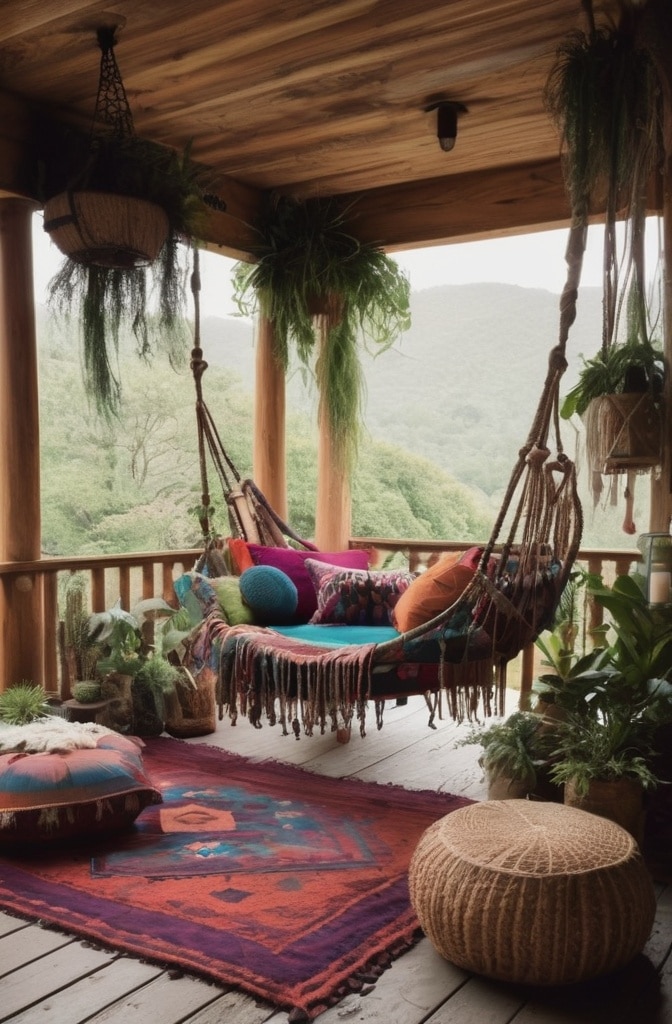
The versatility of gray and blue allows this color combination to adapt beautifully across various design styles. Let’s explore how to tailor this color palette to specific aesthetics:
Modern Minimalist
In modern minimalist spaces, the key is restraint. Opt for clean-lined furniture in solid gray upholstery with carefully chosen blue accents. Architectural photographer Diana Willis observes, “The most successful minimalist gray and blue rooms I’ve captured maintain a strict 70-20-10 ratio—70% neutral base (walls, floors), 20% main color (typically the larger blue elements), and 10% accent (often metallics or a contrasting tertiary color).”
A concrete gray floor with white walls and strategic pops of cobalt blue in art or a single statement chair creates a space that feels both cool and curated without being cold.
Coastal and Nautical-Inspired
Blue and gray are naturals for coastal-inspired living rooms. Unlike the clichéd beach themes of the past, modern coastal designs use sophisticated gray as a counterpoint to ocean-inspired blues.
Designer Catherine Morris explains, “Today’s coastal look isn’t about seashells and anchors—it’s about capturing the feeling of oceanfront property with a refined palette. Think weathered gray woods, textured natural fibers, and blues that range from deep navy to misty sea foam.”
Incorporate elements like:
- Driftwood-toned gray furniture pieces
- Textured jute or sisal rugs in natural gray
- Various blue textiles that recall different water states—deep navy for still waters, turquoise for tropical shallows
- Matte white accents for contrast and brightness
Industrial Chic
The industrial aesthetic leverages gray’s association with concrete, metal, and urban materials while using blue to soften what might otherwise feel too stark.
In loft-style spaces, expose concrete walls or floors (natural grays) and incorporate navy blue upholstery for seating areas. Raw steel fixtures in graphite gray complement the look, while midnight blue art or textiles add depth without competing with the architectural elements.
A recent trend in industrial spaces is incorporating indigo-dyed textiles—which bring traditional craftsmanship into modern industrial contexts—as throw pillows or wall hangings against gray backdrops.
The Power of Texture in Gray and Blue Spaces

One challenge with gray and blue rooms is that they can sometimes feel flat or cold without proper attention to texture. The solution? Layering different tactile elements to create visual and physical depth.
“Texture is the secret ingredient in monochromatic or duo-chromatic spaces,” explains textile designer Priya Agarwal. “Without it, even the most beautiful gray and blue room can fall flat and feel uninviting.”
Textures That Add Warmth
To prevent your gray and blue living room from feeling chilly:
- Chunky knit throws in heather gray or navy add immediate coziness
- Velvet upholstery in deep blue creates rich depth while reflecting light beautifully
- Nubby bouclé fabrics in pale gray offer visual interest and tactile comfort
- Wool rugs with subtle patterns incorporating both hues ground the space
One particularly effective approach is contrasting smooth with rough textures. A sleek, lacquered gray coffee table looks stunning atop a heavily textured blue area rug. Or try the reverse—a smooth blue velvet sofa paired with rough-hewn gray stone side tables.
Real-world example: Interior stylist Emma Chen revitalized a client’s flat-feeling gray and blue living room by adding a chunky cable-knit throw in French blue, gray linen curtains with visible texture, and a high-pile Moroccan-style rug that incorporated both colors. “The transformation was immediate,” she reports. “The room went from feeling like a showroom to feeling like a home.”
Statement Walls and Focal Points

A statement wall can anchor your gray and blue living room design, providing a focal point and setting the tone for the entire space.
Navy Accent Walls
A navy blue accent wall against lighter gray furnishings creates instant drama and sophistication. This approach works particularly well on the wall behind your sofa or on a fireplace wall. According to paint brand Dulux, dark blue walls increased in popularity by 45% between 2020 and 2023, with navy leading the trend.
For maximum impact, choose a navy with subtle depth like Benjamin Moore’s “Hale Navy” or Farrow & Ball’s “Drawing Room Blue,” which change slightly throughout the day as light conditions shift.
Geometric Patterns
For a more contemporary take, consider geometric wallpaper or hand-painted designs that incorporate both gray and blue. Patterns add another dimension to your space while reinforcing your color scheme.
“Geometric patterns in complementary shades of the same color family create depth without chaos,” notes wallpaper designer Jackson Wei. “A gray room with blue geometric patterns—or vice versa—feels cohesive yet interesting.”
Gallery Walls
A carefully curated gallery wall provides another opportunity to showcase your gray and blue palette while displaying meaningful art and photographs. Consider:
- Matching frames in either matte navy or weathered gray
- Art pieces that incorporate both colors
- Interspersing solid color mats in varying shades of blue and gray
- Adding small three-dimensional objects in complementary tones
Remember that negative space is crucial in gallery arrangements—don’t overcrowd your wall. Allow each piece room to breathe within your carefully orchestrated color story.
Read this blog: https://hometranquil.com/these-green-living-room-22-ideas/
Furniture Selection and Arrangement
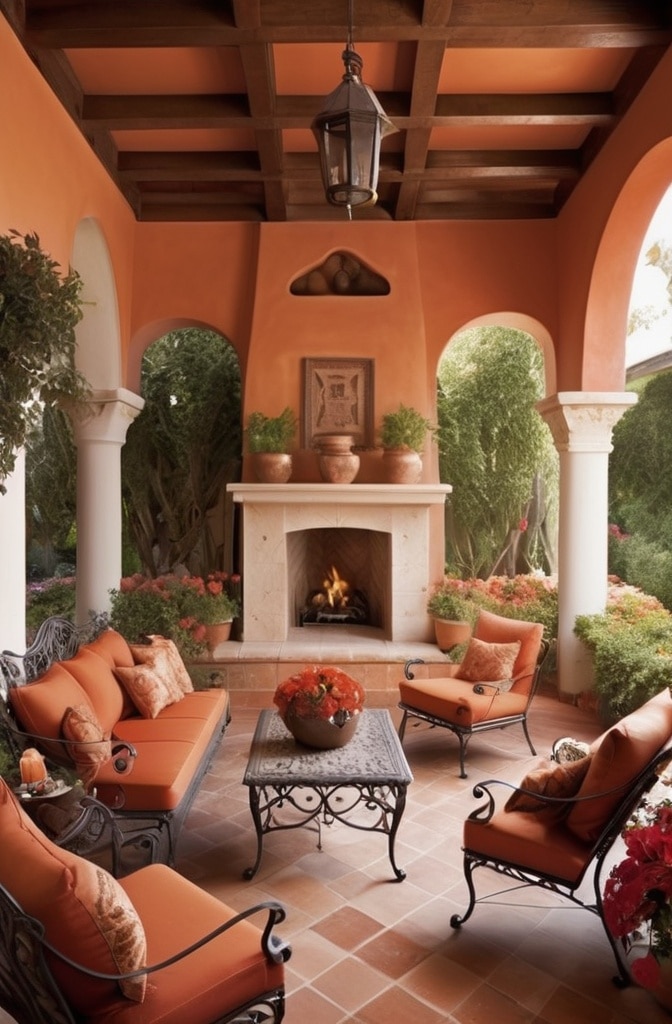
Your furniture choices can make or break your gray and blue living room vision. Beyond aesthetics, consider how different arrangements and pieces will function in your daily life.
Gray Sofas with Blue Accents
Gray sofas offer incredible versatility and longevity. According to furniture retailer West Elm, gray remains their top-selling sofa color, with over 60% of customers choosing it for its adaptability across design styles.
To incorporate blue with a gray sofa:
- Add navy pillows in varying textures (velvet, linen, woven)
- Drape a blue throw across one corner or the back
- Place a blue ottoman or pouf nearby
- Position blue side chairs across from or adjacent to the sofa
Design tip: Vary the shades and textures of blue accessories to create a more sophisticated, collected look rather than a matchy-matchy feel.
Blue Statement Sofas
For the bold, a blue sofa makes an unforgettable statement in a gray living room. “A blue sofa against gray walls is like a sapphire set in platinum—it’s timeless elegance personified,” says furniture designer Ana Mori.
When choosing a blue sofa:
- Consider durability—navy and darker blues hide wear better than lighter tones
- Test fabric samples in your space’s actual lighting
- Ensure the undertones complement your gray tones (warm blues with warm grays, cool with cool)
- Balance with neutral gray tables, rugs, or shelving
Wood Tones That Complement Blue and Gray
While focusing on blue and gray, don’t overlook the importance of wood tones in your living room. The right wood finish warms up what could otherwise become a cool-toned space.
For contemporary spaces, light oak or ash with gray undertones works beautifully with both navy and lighter blues. Mid-century lovers should consider walnut’s rich, warm tones, which create stunning contrast with cool blues and grays. For a coastal feel, whitewashed or driftwood finishes bridge the gap between gray and blue elements.
Avoid very orange-toned woods in blue and gray spaces unless you’re deliberately creating high contrast or an eclectic look.
Accessorizing Your Gray and Blue Living Room
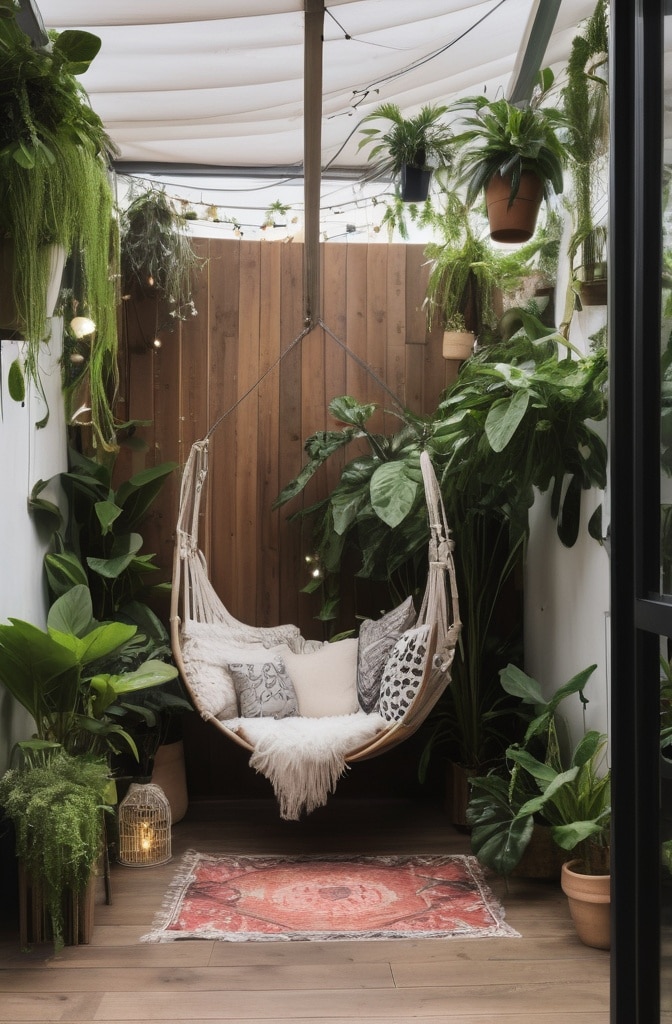
The right accessories can elevate your gray and blue living room from nice to unforgettable. These finishing touches inject personality while reinforcing your carefully chosen color scheme.
Pillows and Throws
Textiles offer the easiest way to adjust your blue and gray balance without major investment. Interior stylist Lauren Greene recommends: “Start with a 60-30-10 approach—60% of your base color (usually gray), 30% of your secondary color (various blues), and 10% accent color like silver, gold, or even a complementary hue like coral or mustard.”
Mix patterns thoughtfully:
- Combine solid blues with subtle gray patterns
- Add geometric patterns that incorporate both colors
- Include one statement pattern slightly outside your scheme to prevent monotony
Metallic Accents
Metallics function as the “jewelry” in gray and blue living rooms. Different metal finishes create distinctly different feels:
- Silver and chrome enhance the cool sophistication of blue and gray, creating a contemporary, sleek atmosphere
- Gold and brass warm up these cool tones, adding richness and preventing the space from feeling cold
- Blackened metals like iron or bronze add industrial edge and visual weight
According to design platform Houzz’s 2023 trend report, mixing metal finishes has become increasingly popular, with 78% of newly designed living rooms featuring at least two distinct metal finishes.
Place metallic elements at varying heights throughout your space—table lamps with metal bases, picture frames, candle holders, and decorative objects—to create a cohesive look that draws the eye around the room.
Art Selection
Artwork provides another opportunity to reinforce your gray and blue palette while expressing your personality. Consider these approaches:
- Abstract pieces featuring various blues with gray undertones
- Black and white photography in gray frames with blue mats
- Coastal or water-themed art that naturally incorporates blues
- Modern art with splashes of blue against neutral backgrounds
“Art selection should feel personal, not prescribed,” advises gallery owner Tessa Nguyen. “The best gray and blue living rooms include art that means something to the homeowner while happening to complement the color scheme—not pieces chosen solely for their colors.”
Natural Elements and Greenery
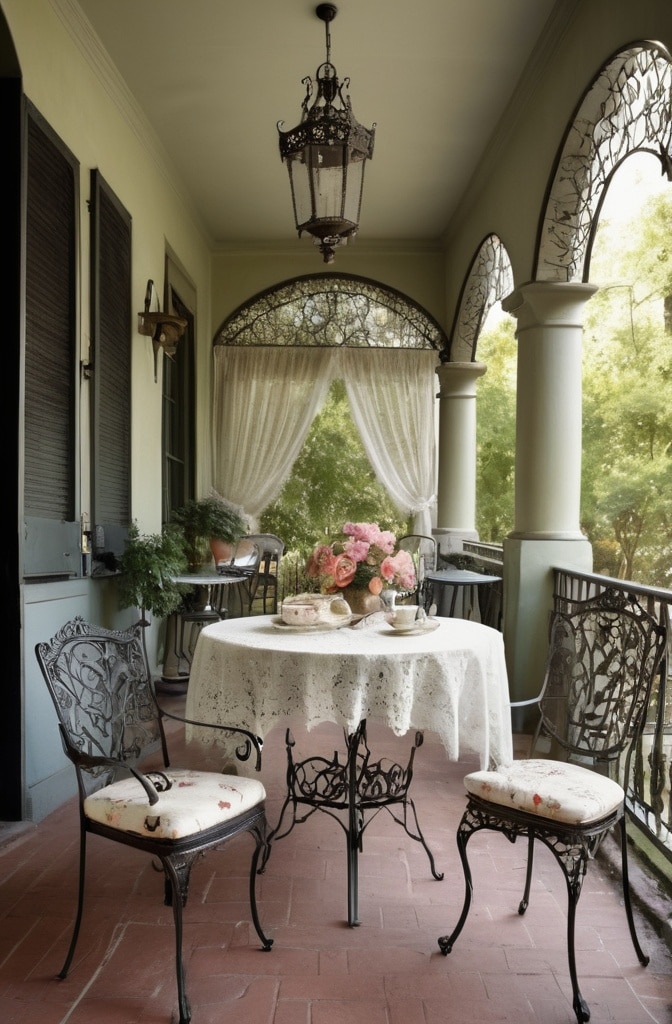
Living elements provide crucial contrast in gray and blue spaces, preventing them from feeling static or overly coordinated. Plants add organic shapes, movement, and life.
Best Plants for Gray and Blue Rooms
Certain plants particularly complement this color palette:
- Silvery-blue succulents like blue spruce sedum or blue chalk sticks extend your color scheme into your plantings
- Plants with gray-green foliage such as olive trees or dusty miller create harmony
- Deep green plants with structural shapes like fiddle leaf figs or ZZ plants offer natural contrast
- White-flowering plants like peace lilies or orchids add brightness without disrupting your palette
Research from NASA’s Clean Air Study confirms that incorporating plants improves air quality while enhancing wellbeing—a perfect complement to the calming effects of your gray and blue color scheme.
Natural Materials
Incorporate natural elements beyond plants to warm up your space:
- Driftwood sculptures or accent pieces
- Stone coasters or decorative objects
- Seagrass or jute baskets for stylish storage
- Linen curtains or upholstery that add organic texture
“Natural materials are crucial in contemporary spaces to prevent them from feeling sterile,” explains sustainable designer Olivia Chen. “In blue and gray rooms particularly, organic elements provide necessary warmth and connection to the natural world.”
Window Treatments for Gray and Blue Rooms

Window treatments significantly impact both the function and feeling of your gray and blue living room. The right selections enhance light quality while reinforcing your design vision.
Curtain Considerations
For maximum versatility, consider layering treatments:
- Light-filtering gray sheers for daytime privacy
- Heavier blue drapes that can be drawn for evening coziness or media viewing
“Window treatments should frame your view without competing with it,” advises window treatment specialist Devon Rodriguez. “In gray and blue rooms, treatments can either blend seamlessly or make a deliberate statement.”
For a subtle approach, choose curtains slightly lighter than your wall color. For drama, install floor-to-ceiling navy drapes against light gray walls, ensuring they extend at least 10-12 inches on either side of the window to make it appear larger.
Pattern Through Window Coverings
Patterned window treatments add visual interest while reinforcing your color story:
- Subtle gray herringbone sheers add texture without overwhelming
- Bold blue and white geometric patterns make an unmistakable statement
- Gradient patterns that transition from dark blue to light gray create visual flow
If your room already contains significant pattern, opt for solid window treatments in either gray or blue to provide visual rest.
Flooring Options That Complete the Look
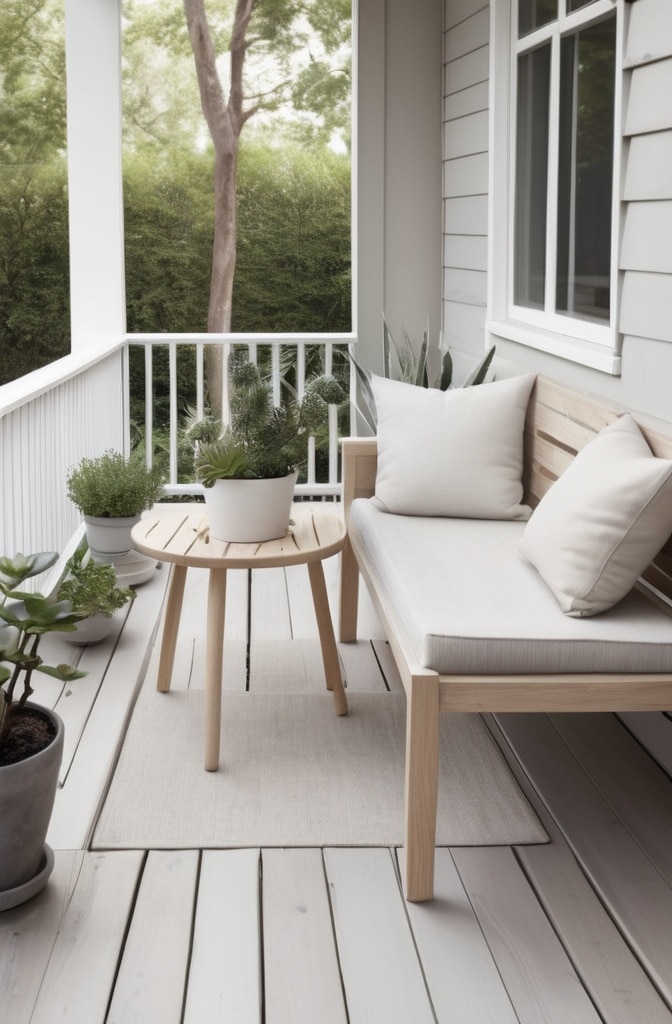
Your floor creates the foundation for your entire gray and blue living room design. Whether you’re starting from scratch or working with existing floors, consider how this large surface area impacts your overall color scheme.
Area Rugs that Anchor the Design
A well-chosen area rug can unite your furniture grouping while reinforcing your color palette. For gray and blue living rooms, consider:
- Vintage-inspired rugs with faded blues and grays for subtle sophistication
- Geometric patterns that incorporate both colors for contemporary spaces
- Solid gray rugs with blue borders (or vice versa) for clean-lined modernism
- Textured solid rugs in either color with visible weave for added dimension
Design guideline: Your rug should be large enough that at least the front legs of all furniture in a grouping sit on it. For living rooms, designers typically recommend at least an 8’x10′ rug for average spaces.
Hard Flooring Choices
If selecting new flooring, consider these options that complement gray and blue décor:
- Gray-washed hardwood for contemporary sophistication
- Light ash or oak for Scandinavian-inspired spaces
- Slate or concrete for industrial-modern aesthetics
- Luxury vinyl or laminate in weathered gray tones for durability and budget-friendliness
According to flooring industry statistics, gray-toned wood floors have seen a 35% increase in popularity since 2018, making them both on-trend and likely to remain desirable for years to come.
Lighting Design for Gray and Blue Spaces

Lighting dramatically affects how we perceive color, making it particularly important in blue and gray spaces where undertones shift significantly under different light conditions.
Light Temperature Effects
Color temperature (measured in Kelvins) dramatically impacts how blues and grays appear:
- Warm lighting (2700-3000K) makes blues appear slightly greener and warms up grays
- Cool lighting (4000K+) intensifies blues and can make grays appear colder
- Natural daylight (5000-6500K) shows colors most accurately
Many designers recommend using adjustable temperature bulbs or fixtures in gray and blue rooms to adapt to different seasons and times of day.
Layered Lighting Approaches
Create depth and functionality through layered lighting:
- Ambient lighting provides overall illumination—recessed lights or a central fixture in soft white (3000-3500K)
- Task lighting illuminates specific activities—reading lamps, under-cabinet lights
- Accent lighting highlights architectural features or art—picture lights, wall sconces, or uplights
“Lighting design can make or break a gray and blue space,” says lighting designer Sarah Jimenez. “Without adequate layered lighting, these colors can sometimes appear flat or gloomy, especially in rooms with limited natural light.”
Small Space Solutions with Gray and Blue
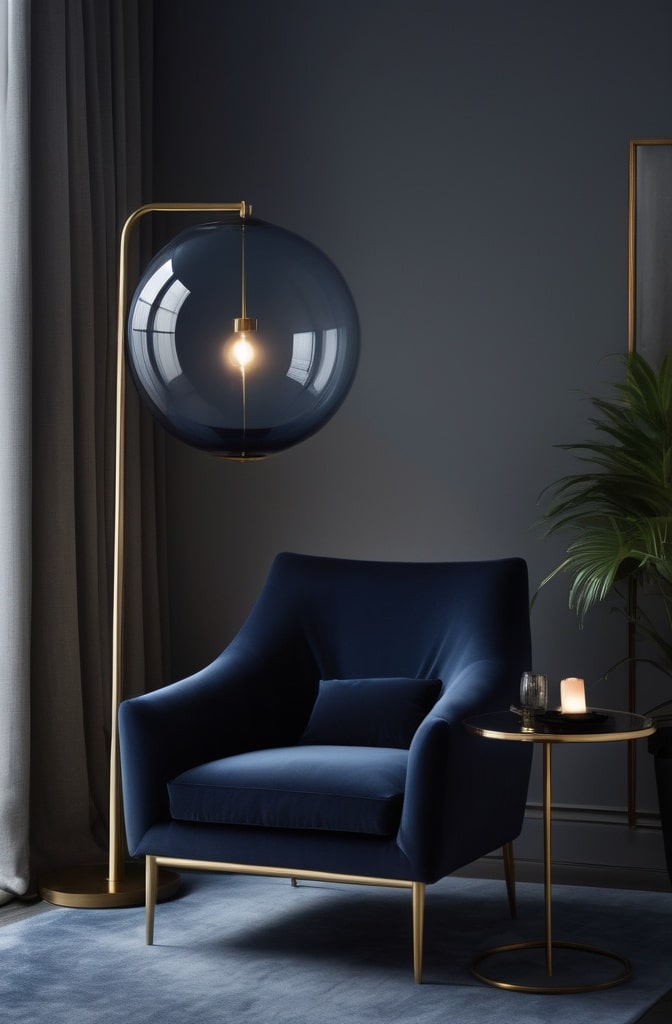
Gray and blue can work wonderfully in compact living areas when applied thoughtfully. These colors have the unique ability to make spaces feel either larger or cozier, depending on application.
Color Placement Tips
To maximize perceived space:
- Paint walls in light to mid-tone gray
- Incorporate blue in furniture and accessories rather than on walls
- Use mirrors with subtle blue or gray frames to bounce light
- Keep patterns smaller scale in limited square footage
“In small spaces, restraint is key,” advises small-space specialist Marco Feng. “I recommend clients stick to no more than three shades each of gray and blue to prevent visual chaos in compact rooms.”
Multi-functional Furniture
For small gray and blue living rooms, choose pieces that work double-duty:
- A navy storage ottoman that serves as coffee table, storage, and extra seating
- A gray sleeper sofa for overnight guests
- Nesting tables in mixed materials (blue lacquer and gray metal, for example)
- Modular seating that can be reconfigured as needed
Recent innovations in multi-functional furniture have made these pieces more stylish than ever. According to furniture industry reports, sales of multi-purpose pieces increased by 67% during 2020-2022 and have remained strong as homeowners continue emphasizing functionality alongside aesthetics.
Open-Concept Gray and Blue Living Areas
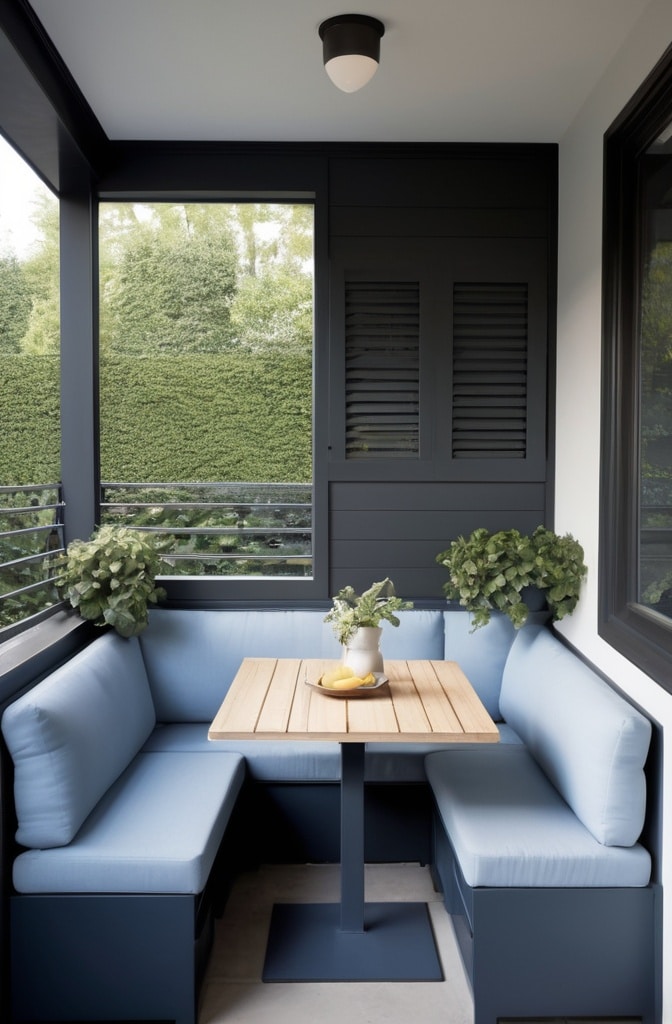
Open floor plans present both opportunities and challenges when designing with gray and blue. These colors can help create visual distinction between zones while maintaining overall harmony.
Zone Creation Through Color Blocking
Use your gray and blue palette strategically to define different functional areas:
- A primarily gray living zone adjacent to a kitchen with blue accents
- Consistent gray flooring throughout with area rugs in varying blue tones to define spaces
- Painted ceiling beams or partial walls in contrasting colors to suggest boundaries
“Color zoning is one of the most effective techniques in open-concept design,” explains architectural color consultant Helena Wong. “Blue and gray are ideal for this approach because they’re distinct enough to create visual borders without jarring transitions.”
Maintaining Cohesion
To ensure your open space feels intentional rather than disjointed:
- Repeat specific shades of both colors throughout the entire area
- Use consistent metal finishes across zones
- Select one signature pattern that incorporates both colors and repeat it strategically
- Choose a single wood tone for furniture across all areas
Remember that sight lines matter tremendously in open concepts—each area should complement the spaces visible from it.
Seasonal Adjustments to Your Gray and Blue Living Room
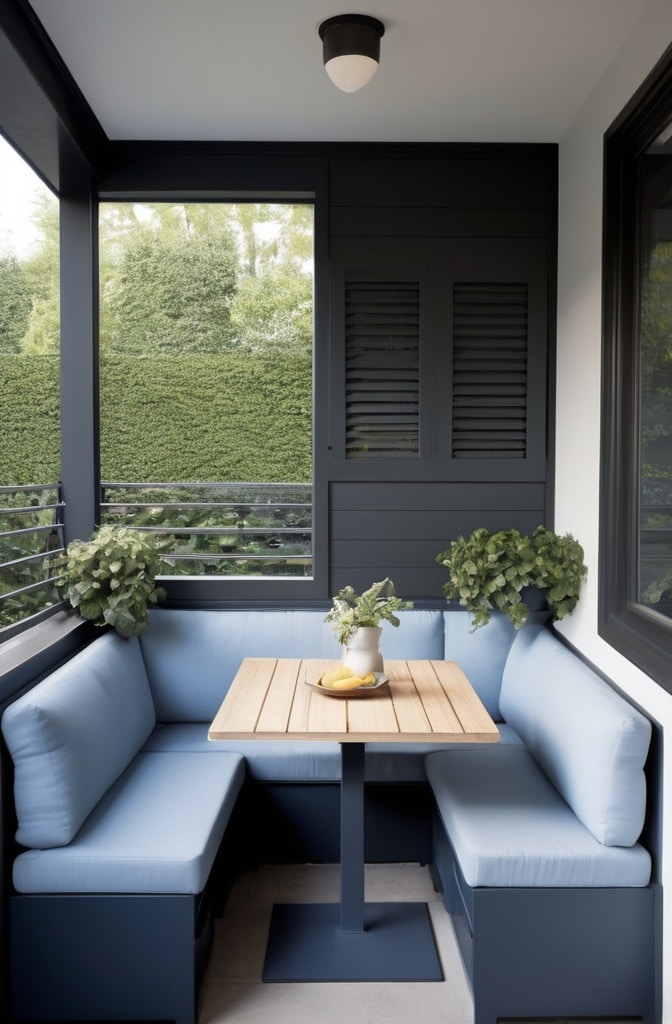
One advantage of a gray and blue foundation is its adaptability across seasons. With minimal changes, you can transition your space from bright summer vibes to cozy winter warmth.
Summer Freshness
Lighten up your gray and blue living room for summer:
- Swap heavy blue drapes for lighter sheers
- Add white accents for brightness and contrast
- Incorporate natural elements like driftwood or sea glass
- Replace woolen throws with lightweight cotton or linen versions in pale blue
A 2022 survey by home decor retailer Crate & Barrel found that 73% of homeowners make seasonal decor adjustments, with summer changes focusing primarily on lightening color palettes and introducing natural elements.
Cozy Winter Updates
For colder months, enhance warmth while maintaining your color scheme:
- Add chunky knit throws in deep navy or charcoal
- Introduce warmer metals like brass or copper
- Layer additional textiles like velvet pillows or wool area rugs
- Consider temporary additions in warm accent colors like amber or terracotta
“The beauty of a gray and blue foundation is its chameleon-like ability to shift mood with minimal changes,” says seasonal home stylist Jennifer Park. “It’s like having a versatile canvas that adapts to your needs throughout the year.”
Budget-Friendly Gray and Blue Transformations

Creating a stunning gray and blue living room doesn’t require a complete renovation or designer budget. These strategic approaches deliver maximum impact at minimum cost.
DIY Projects with Impact
Transform your space with these affordable DIY ideas:
- Paint an accent wall in navy blue (approximately $30-50 for quality paint)
- Recover existing throw pillows in blue and gray fabrics
- Create art using blue and gray paint on canvas
- Refinish wood furniture with gray wash techniques
According to a HomeAdvisor report, DIY painting ranks as the most cost-effective room transformation, with average savings of 50-85% compared to professional services.
Thrift Store Transformations
Second-hand finds can be customized to your color scheme:
- Wooden furniture painted in chalk paint (gray for larger pieces, blue for accents)
- Vintage brass lamps updated with new gray or blue shades
- Picture frames spray-painted in metallic silver or navy
- Ceramic pieces unified with blue or gray paint
Design blogger Maria Gonzalez documented her budget gray and blue makeover: “I spent just $430 total, including thrifted furniture, paint, and new throw pillows. The space looks completely different—much more expensive and intentional than before.”
Expert Insights: What Designers Want You to Know
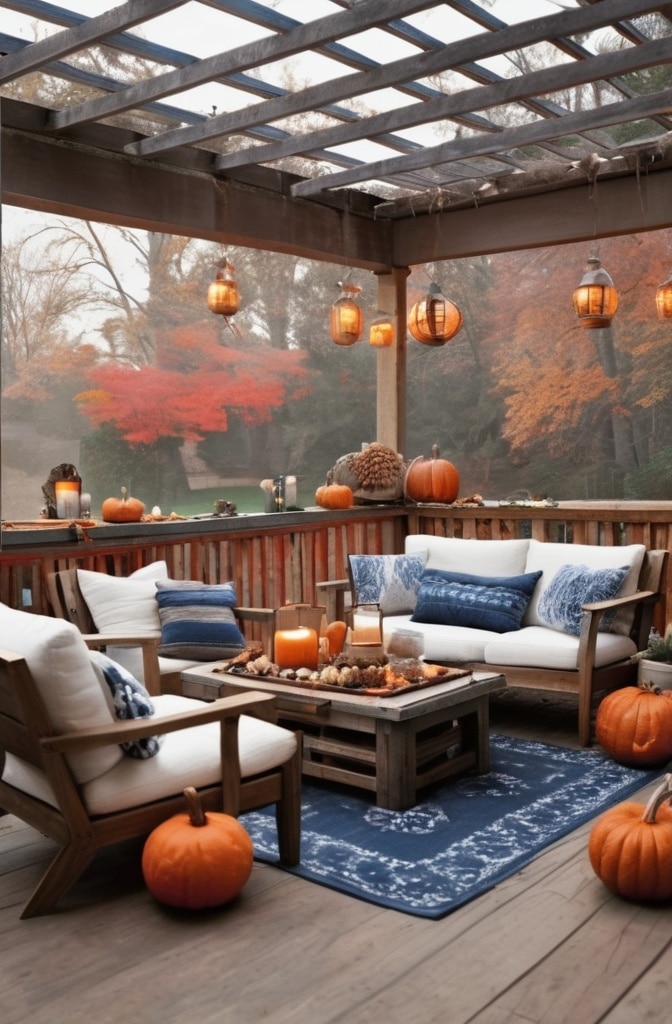
We consulted top interior designers for their professional insights on creating successful gray and blue living rooms.
Award-winning designer Thomas Chen emphasizes balance: “The most common mistake I see is improper distribution of color. Aim for roughly 60% of your dominant neutral (usually gray), 30% of your secondary color (blue), and 10% accent colors or metals.”
Color consultant Leila Washington addresses undertone challenges: “Test, test, test before committing. What looks like a ‘true’ gray on a paint chip often reveals purple, green, or blue undertones once on your wall. Always view samples in your actual space under different lighting conditions.”
Designer Julia Mandel shares this practical tip: “If you’re uncertain about going bold with blue, start with accessories. It’s much easier to swap out blue pillows than to repaint if you discover navy isn’t for you after all.”
Conclusion
The enduring appeal of gray and blue in living room design speaks to these colors’ remarkable versatility and psychological benefits. From creating calm, sophisticated retreats to energetic, contemporary gathering spaces, this color combination offers endless possibilities for customization.
As you embark on your own gray and blue living room journey, remember that the most successful spaces reflect personal taste while respecting basic design principles. Test colors in your actual space, consider your room’s natural light conditions, and don’t rush the process of layering in textures and accessories that make the space uniquely yours.
The beauty of gray and blue lies in their timeless yet current quality—these colors feel fresh and modern today, but they’re unlikely to look dated five or ten years from now. By investing thoughtfully in this classic palette, you’re creating a living space that will bring joy and comfort for years to come.
We’d love to see your own gray and blue living room transformations! Share your before-and-after photos or design challenges in the comments below.
